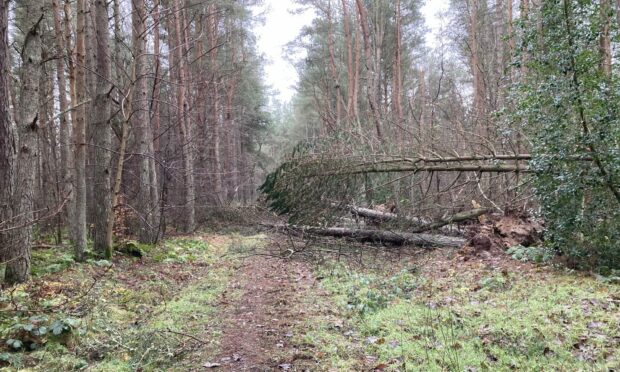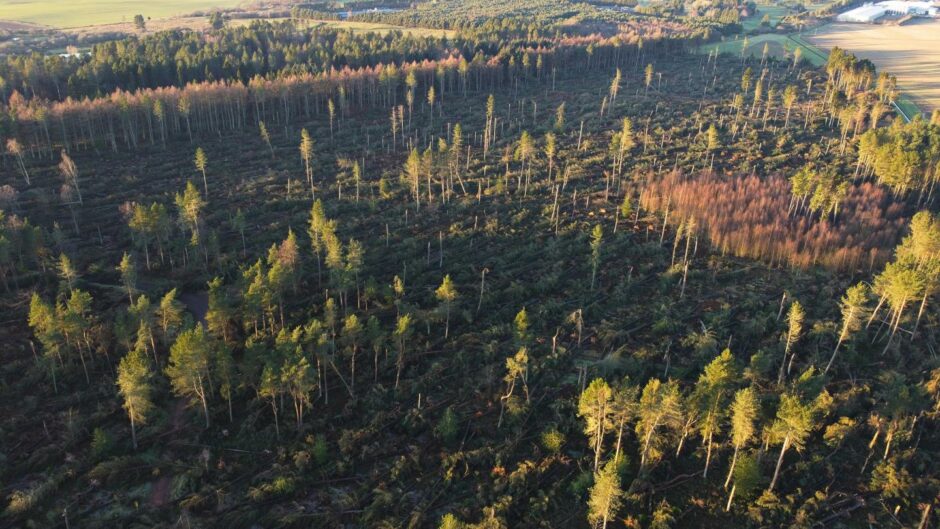The head of Scotland’s biggest provider of outdoor recreation Simon Hodgson has warned forest users to expect more storms as powerful as Storm Arwen.
Mr Hodgson is chief executive at Forestry and Land Scotland. He warned the sector must prepare for more devastating storms in the coming years.
Storm Arwen left a trail of devastation across Fife and Tayside forests. Some experts predict it will take years to restore woodlands to their previous state.
And that doesn’t account for the damage caused by further storms.
Shot ‘across the boughs’
Mr Hodgson said: “The damage to forests caused by Storm Arwen should be seen as a shot ‘across the boughs’, giving us notice of what we might have to contend with in the years to come as the climate changes.
“The Met Office headline for future climate prediction is ‘a greater chance of warmer, wetter winters and hotter, drier summers’.
“Although we will be dealing with the impact of November’s storm for months, and even years, to come, it is a timely reminder that we are right to pursue forest adaptation.”
Storm Arwen climate adaptation essential to protect forests
Storm Arwen was one of the most powerful and damaging winter storms of the latest decade.
The Met Office issued a red weather warning for high wind and gusts of up to 98 mph were recorded in parts of north England.
Locally, the storm caused huge damage to Tentsmuir Forest in north east Fife.
Rangers in Dundee have also warned walkers that their lives are in danger if they enter the popular Templeton Woods on the edge of the city.
We are working to map the damage and repair work across Fife and Tayside.
Mr Hodgson said FLS is already working to adapt its forests to better withstand such events.
He said wetter soils – combined with wind gusts from frequent storms – could make large upland forests more vulnerable.
Techniques to mitigate storm damage include planting a greater mix of species. That creates “a patchwork” to help to dissipate wind gusts. That in turn offers greater protection for the forest.
Planting trees at different stages of a forest’s development will create variation in the heights of trees within a forest, which will also help to dissipate gusts of wind.











